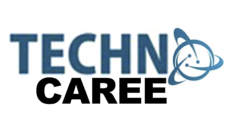How does FedRAMP certification boost trust in cloud-based government services?

The exponential growth of cloud computing has opened tremendous opportunities for government agencies to deliver services more efficiently through the cloud. Security concerns around migrating sensitive data and workloads have created barriers to cloud adoption in the public sector. FedRAMP assesses cloud systems against a comprehensive set of over 400 information security control requirements derived from respected frameworks like NIST 800-53. Achieving FedRAMP certification assures that a system complies with established baseline controls around access management, encryption, vulnerability management, logging/monitoring, and more. Adhering to such meticulous security controls reassures government agencies that certified cloud services meet federal security standards.
Ensuring consistent security across federal agencies
FedRAMP establishes a consistent benchmark for security appropriate for federal information systems. It eliminates inconsistencies and gaps that could emerge if individual agencies developed fully unique security models. Consistent application of FedRAMP controls enables all federal entities to build on the same foundation of cloud security best practices carefully tailored to government needs.
Critical to FedRAMP is rigorous independent testing and validation conducted by accredited third-party assessment organizations (3PAOs). Rather than relying solely on self-attestations by cloud providers, the mandatory independent assessments offer unbiased proof that systems implement security controls effectively. The depth of these examinations by qualified assessors further strengthens trust.
Facilitating security monitoring on an ongoing basis
FedRAMP does not end once initial certification is achieved. Continuous monitoring is required to maintain authorization over time. Cloud systems must continuously collect and analyze security data, report on risks, and address emerging threats. It empowers agencies to remain closely attuned to a cloud provider’s evolving security posture after deployment rather than just at a fixed point in time during the initial assessment.
FedRAMP enables consistent security capabilities across hybrid and multi-cloud environments. As agencies integrate cloud solutions from multiple external providers and connect to on-premises systems, fedramp certifications verifies uniform security controls are in place throughout. It assures robust security even as systems and data span federated cloud models and infrastructure.
Saving agencies resources through reciprocity
Once a cloud system achieves FedRAMP authorization, other government entities grant provisional authorizations leveraging existing FedRAMP documentation and artifacts. Its reciprocity saves agencies enormous resources compared to conducting redundant assessments. The ability to reuse authorizations across the federal government speeds cloud adoption. Receipt of FedRAMP certification necessitates developing internal policies, processes, and governance to support effective security management. Documented plans around system maintenance, incident response, and change control hold providers accountable. Detailed reporting on security posture is required on an ongoing basis. This operational discipline improves trust in a provider’s long-term security operations.
While FedRAMP provides a strong security foundation, risks do remain that government entities must stay vigilant against when adopting cloud services. Human errors, misconfigurations, data leaks, and insider threats all persist even in FedRAMP-certified environments. Strong identity and access controls, logging, encryption, network security, and data protection controls must be maintained. Agencies should layer on additional security controls beyond FedRAMP baselines if warranted by specific use cases or data types. Continuous monitoring, defense in depth security, and maintaining cyber incident response plans all remain indispensable.







